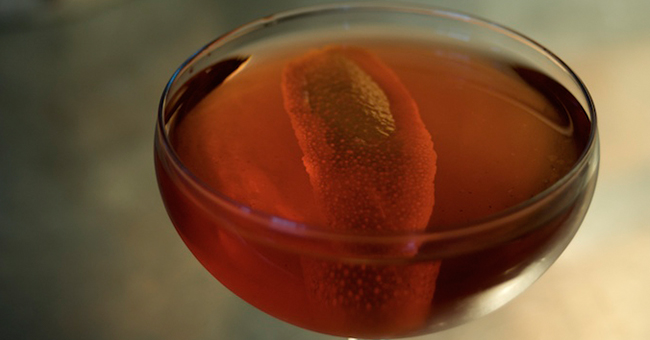When Starbucks put out a product called Bagel Balls in December, restaurateur David Chang (Momofuku) complained loudly on Twitter. “Pick on someone else,” he begged, implying that they had copied his company’s Bagel Bombs. Depending on your perspective, menus everywhere — from tiny craft cocktail spots to Starbucks — copy, are inspired by, derive from or pay homage to somebody else’s creation. Chang filed for a trademark on the name “Bagel Bomb,” but there’s been no further action.
While recipes cannot be copyrighted or trademarked, names can. Philip Greene, author of “To Have and Have Another – A Hemingway Cocktail Companion” and trademark counsel to the U.S. Marine Corps points out we see this all the time, in food with the Big Mac® or Whopper®, TGI Friday’s® has a drink called the Mucho Margarita®, and, he points out, “If you ordered a rum and Coke® and they brought you rum and Pepsi without first explaining, ‘we don’t have Coke, we have Pepsi,’ that’d be bait and switch, and trademark infringement.”
But, whether talking pastries or cocktails, there’s not necessarily much that should be done to protect intellectual property, say both bartender Jeffery Morgenthaler and beverage-industry lawyer Ryan Malkin of Malkin Law. Morgenthaler, who developed the wildly popular and oft-imitated barrel-aged Negroni, says, “I’m not actually in this for the glory. I share what I do because I genuinely want to help other bartenders make better drinks.” Malkin, meanwhile, says that even if a bartender were to trademark the name of a drink, they would likely spend more money policing the use of it than they could get back in return. “Bartenders have it right,” he says, “they should let it out into the world.”
But, should a bartender not want to do that, there’s one way to stop a drink from getting copied, Greene suggests: consider it a trade secret. That, he says, is what many tiki bars used to do: “Trader Vic’s and Don the Beachcomber were famous for mixing up ingredients in bottles marked ‘Don’s Mix,’ or giving them a mysterious number, so that the bartenders only knew it had so many ounces of this mysterious stuff, and that many ounces of that.” He compares it to the formula for Coca-Cola or, more relevant to the industry, Benedictine.
For less secret recipes, many cocktail bars pay homage by crediting a drink’s creator on the menu, but it’s not an established process, nor a requirement. “It’s a nice gesture,” says Morgenthaler, “but not necessary.” He points out that you’d never see a chef’s name next to a dish on a menu. But trademarking is about more than just attribution.
“The point of a trademark,” Malkin explains, “is to show the source; where something came from.” Specifically, it protects consumers by promising that it’s from who they think it comes from. In 2011, when Pusser’s Rum, which holds the trademark on the name “Pusser’s Painkiller,” sued the bar then called Painkiller in New York, they did so to defend their trademark. Greene refers back to his example here: “It’s just as McDonald’s might do if an independent burger joint called itself Big Mac.” Pusser’s wasn’t in the wrong, according to Malkin: if they hold the trademark, they need to police it. If you don’t sue or at least send cease and desist letters, the name will become generic. But, in this specific case, says Greene, “There were doubts that [Pusser’s] was the creator of the drink, so people questioned their legitimacy. Further, people believed the drink name to have fallen into the public domain.” In settlement, the bar changed their name to PKNY, but Pusser’s suffered a PR nightmare, including a boycott of the brand by many bartenders. “It wasn’t pretty,” said Greene.
When it comes to trademarking drinks, Malkin says: “I don’t see a lot of profit in it. It’s unlikely anyone is going to pay to use the name of a cocktail.” While Malkin’s lawyer perspective is that you’ll spend so much money policing that it won’t be worthwhile, the phrase Morgenthaler uses to describe anyone who thinks of cocktails as intellectual property involved multiple unprintable words. When he sees his own cocktails on another menu, he says, “It’s actually a great feeling … I’m just glad that someone is accepting of what I’m trying to share.”





